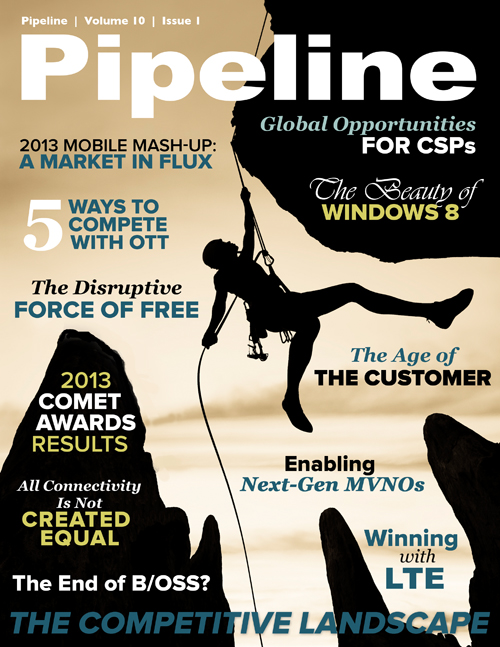5 Ways to Compete With OTT
By: Michael Tessler

For mobile network operators, a pair of converging trends is presenting unprecedented opportunities as well as challenges for business growth. First, the broader deployment of LTE- and 4G-enabled devices allows MNOs to accelerate the return on investment (ROI) of their mobile broadband networks and, in addition to voice, deliver new and innovative mobile UC, or unified communications, applications to enterprise users. Second, emerging cloud-delivery platforms are making it possible for MNOs to shrink time to market (TTM) in the delivery of advanced applications to an increasingly mobile workforce with consumer-grade expectations.
Operators increasingly recognize that addressing these challenges is key in combating the mounting threat posed by over-the-top players, both in terms of revenue and subscriber numbers. Behemoths such as Apple and Google are generally thought of as the biggest threats, but the fact of the matter is that the current OTT landscape is unpredictable. Take WhatsApp, a cross-platform SMS-replacement messaging service that handles two billion messages a day and now boasts more than 200 million monthly users, many of whom joined to avoid paying for SMS as part of their communications service provider’s unlimited data plan.
MNOs can’t treat WhatsApp’s meteoric rise as an aberration, as other companies will no doubt pop up sooner or later with the explicit goal of exploiting operators’ customer pain points. WhatsApp’s utilization of text messaging is a prototypical example of a service—in this case, SMS—that’s generated strong revenues for operators for years without using up significant network capacity. The encouraging news is that MNOs have several unique assets at their disposal that can help them address customer demand for cross-platform UC that extends beyond traditional communications services such as voice and SMS. Using the five strategies outlined here, operators can successfully fight off the OTT invasion as they continue to grow.1. Capitalize on strong services branding.
Back in 2011 BroadSoft tasked Cohen Research Group with conducting a survey of 200 IT leaders in both the United States and the United Kingdom on trends in enterprise adoption of mobile and unified communications services. The results indicated that many enterprises believe their mobile network operator is strongly positioned to deliver UC services such as a single voicemail system, instant messaging, video calling, unified messaging, voicemail and email integration, extension dialing, and video conferencing.
There is little evidence to support the idea that enterprise decision-makers have lost faith in the ability of MNOs to deliver a strong UC offering in the two years since Cohen Research Group conducted its survey, but it’s clear that the window of opportunity is closing. As more services like WhatsApp emerge, it will become more challenging for operators to, in effect, top the industry’s over-the-top players.
Mobile network operators must seize on their strong services branding by effectively communicating the benefits of UC. BroadSoft conducted a separate survey and found that users generally understand UC features and are willing to adopt UC technologies, but few understand the benefits and how they can be used to eliminate current communications frustrations. MNOs have accumulated tremendous brand credibility over the years; conveying the benefits of UC and mobility requires leveraging solutions that combine an intuitive user experience, mobile-ready services, an open platform, and market-ready packages and promotions that allow workers to communicate using their preferred services (voice, video, web conferencing, instant messaging, etc.) and devices (laptops, smartphones and tablets).





















